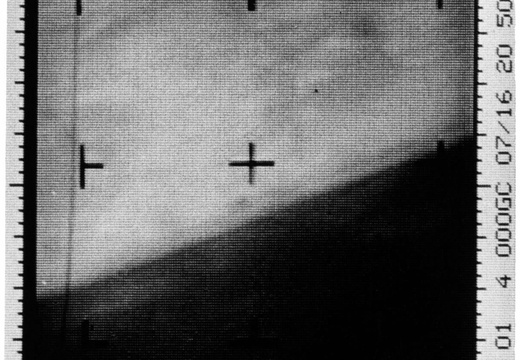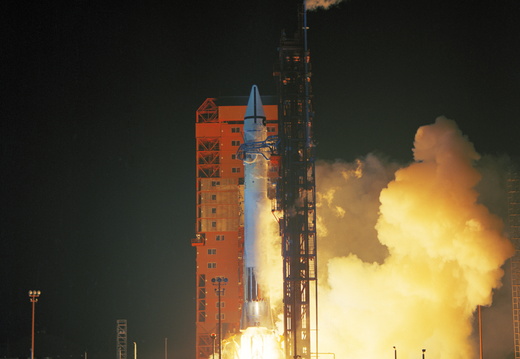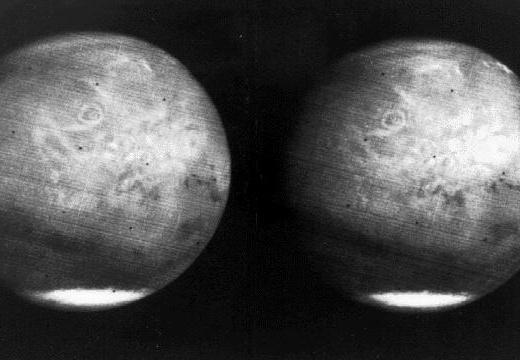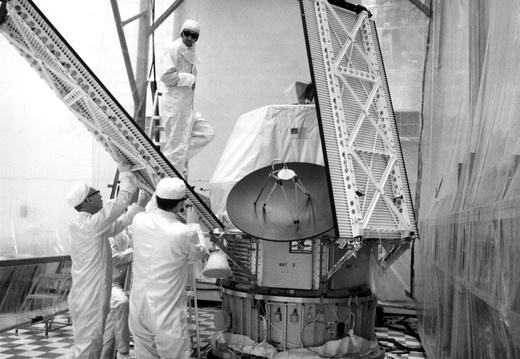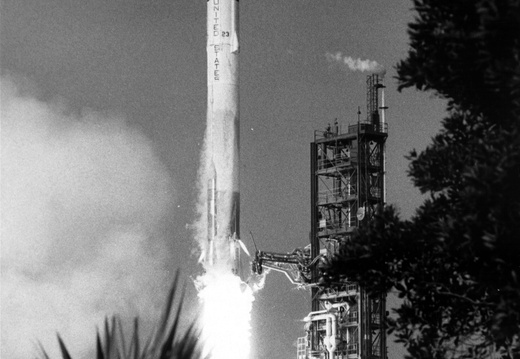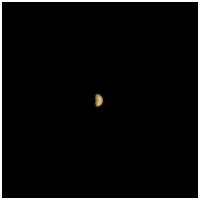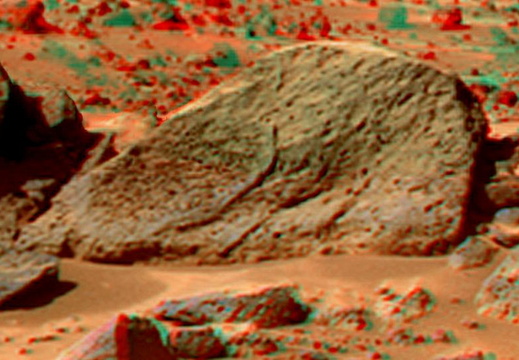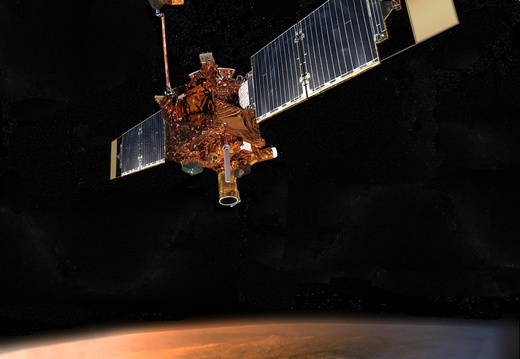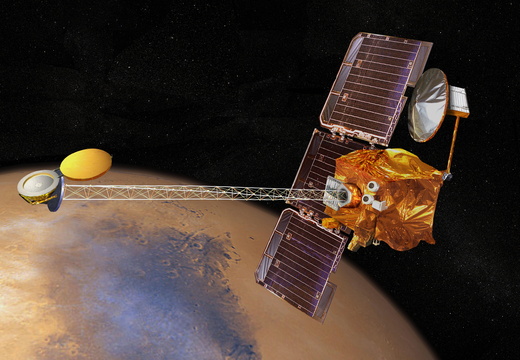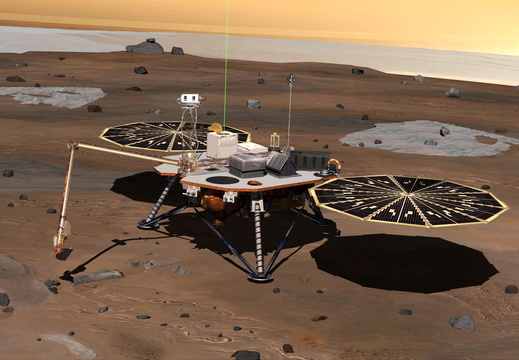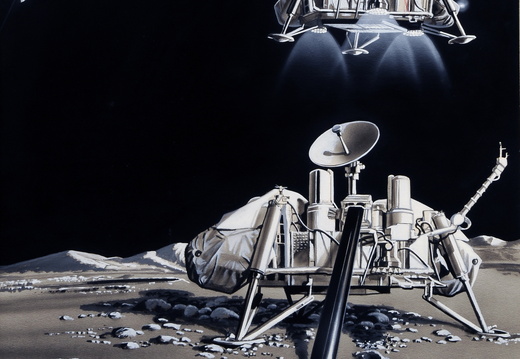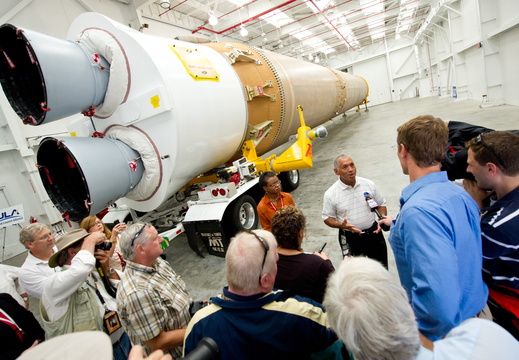
CURIOSITY
Mars Science Laboratory will study Mars' habitability
To find out, the rover carries the biggest, most advanced suite of instruments for scientific studies ever sent to the martian surface. The rover will analyze samples scooped from the soil and drilled from rocks. The record of the planet's climate and geology is essentially "written in the rocks and soil" -- in their formation, structure, and chemical composition. The rover's onboard laboratory will study rocks, soils, and the local geologic setting in order to detect chemical building blocks of life (e.g., forms of carbon) on Mars and will assess what the martian environment was like in the past.
Mars Science Laboratory relies on innovative technologies
Mars Science Laboratory will rely on new technological innovations, especially for landing. The spacecraft descended on a parachute and then, during the final seconds prior to landing, lowered the upright rover on a tether to the surface, much like a sky crane. Now on the surface, the rover will be able to roll over obstacles up to 75 centimeters (29 inches) high and travel up to 90 meters (295 feet) per hour. On average, the rover is expected to travel about 30 meters (98 feet) per hour, based on power levels, slippage, steepness of the terrain, visibility, and other variables.
The rover carries a radioisotope power system that generates electricity from the heat of plutonium's radioactive decay. This power source gives the mission an operating lifespan on Mars' surface of a full martian year (687 Earth days) or more, while also providing significantly greater mobility and operational flexibility, enhanced science payload capability, and exploration of a much larger range of latitudes and altitudes than was possible on previous missions to Mars.
Arriving at Mars at 10:32 p.m. PDT on Aug. 5, 2012 (1:32 a.m. EDT on Aug. 6, 2012), Mars Science Laboratory will serve as an entrée to the next decade of Mars exploration. It represents a huge step in Mars surface science and exploration capability because it will:
demonstrate the ability to land more precisely in a 20-kilometer (12.4-mile) landing circle
demonstrate long-range mobility on the surface of the red planet (5-20 kilometers or about 3 to 12 miles) for the collection of more diverse samples and studies.
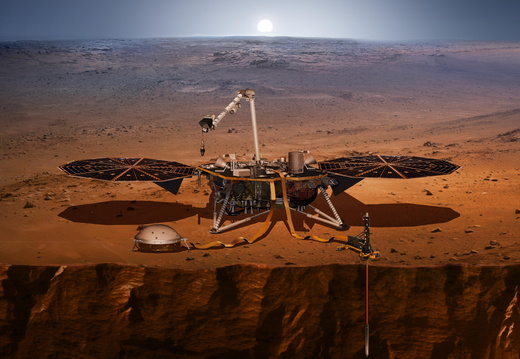
INSIGHT
InSight (Interior Exploration using Seismic Investigations, Geodesy and Heat Transport) is a NASA Discovery Program mission that will place a single geophysical lander on Mars to study its deep interior. But InSight is more than a Mars mission - it is a terrestrial planet explorer that will address one of the most fundamental issues of planetary and solar system science - understanding the processes that shaped the rocky planets of the inner solar system (including Earth) more than four billion years ago.
By using sophisticated geophysical instruments, InSight will delve deep beneath the surface of Mars, detecting the fingerprints of the processes of terrestrial planet formation, as well as measuring the planet's "vital signs": Its "pulse" (seismology), "temperature" (heat flow probe), and "reflexes" (precision tracking).
Why Mars?
Previous missions to Mars have investigated the surface history of the Red Planet by examining features like canyons, volcanoes, rocks and soil, but no one has attempted to investigate the planet's earliest evolution - its building blocks - which can only be found by looking far below the surface.
Because Mars has been less geologically active than the Earth (for example, it does not have plate tectonics), it actually retains a more complete record of its history in its own basic planetary building blocks: its core, mantle and crust.
By studying the size, thickness, density and overall structure of the Red Planet's core, mantle and crust, as well as the rate at which heat escapes from the planet's interior, the InSight mission will provide glimpses into the evolutionary processes of all of the rocky planets in the inner solar system.
In terms of fundamental processes that shape planetary formation, Mars is a veritable "Goldilocks" planet, because it is big enough to have undergone the earliest internal heating and differentiation (separation of the crust, mantle and core) processes that shaped the terrestrial planets (Earth, Venus, Mercury, Moon), but small enough to have retained the signature of those processes over the next four billion years. Within its own structural signature, Mars may contain the most in-depth and accurate record in the solar system of these processes.
The InSight mission will follow the legacy of NASA's Mars Phoenix mission and send a lander to Mars, which will delve deeper into the surface than any other spacecraft - to investigate the planet's structure and composition as well as its tectonic activity as it relates to all terrestrial planets, including Earth.
Objectives
The InSight mission will seek to understand the evolutionary formation of rocky planets, including Earth, by investigating the interior structure and processes of Mars. InSight will also investigate the dynamics of Martian tectonic activity and meteorite impacts, which could offer clues about such phenomena on Earth.
Spacecraft and Payload
The InSight mission is similar in design to the Mars lander that the Phoenix mission used successfully in 2007 to study ground ice near the north pole of Mars. The reuse of this technology, developed and built by Lockheed-Martin Space Systems in Denver, CO, will provide a low-risk path to Mars without the added cost of designing and testing a new system from scratch.
The InSight lander will be equipped with two science instruments that will conduct the first "check-up" of Mars in more than 4.5 billion years, measuring its "pulse", or internal activity; its temperature; and its "reflexes" (the way the planet wobbles when it is pulled by the Sun and its moons). Scientists will be able to interpret this data to understand the planet's history, its interior structure and activity, and the forces that shaped rocky planet formation in the inner solar system.
The science payload is comprised of two instruments: the Seismic Experiment for Interior Structure (SEIS), provided by the French Space Agency (CNES), with the participation of the Institut de Physique du Globe de Paris (IPGP), the Swiss Federal Institute of Technology (ETH), the Max Planck Institute for Solar System Research (MPS), Imperial College and the Jet Propulsion Laboratory (JPL); and the Heat Flow and Physical Properties Package (HP3), provided by the German Space Agency (DLR). In addition, the Rotation and Interior Structure Experiment (RISE), led by JPL, will use the spacecraft communication system to provide precise measurements of planetary rotation.
Mission Details
The InSight mission is part of NASA's Discovery Program. It will rely on proven technologies used on NASA's Mars Phoenix mission, and will send a lander to the Martian surface that will spend two years investigating the deep interior of Mars - as well as the processes that not only shaped the Red Planet, but also rocky planets throughout the inner solar system.
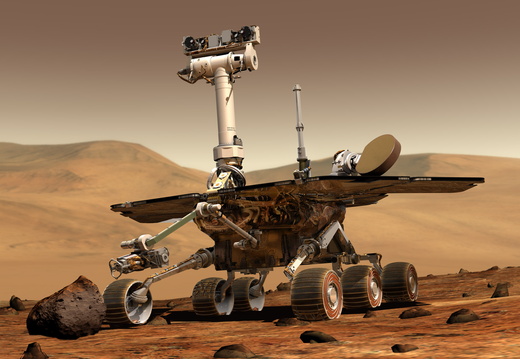
MARS EXPLORATION ROVERS
The Mars Exploration Rover mission is part of NASA's Mars Exploration Program, a long-term effort of robotic exploration of the red planet.
Primary among the mission's scientific goals is to search for and characterize a wide range of rocks and soils that hold clues to past water activity on Mars. The spacecraft are targeted to sites on opposite sides of Mars that appear to have been affected by liquid water in the past. The landing sites are at Gusev Crater, a possible former lake in a giant impact crater, and Meridiani Planum, where mineral deposits (hematite) suggest Mars had a wet past.
After the airbag-protected landing craft settled onto the surface and opened, the rovers rolled out to take panoramic images. These images give scientists the information they need to select promising geological targets that tell part of the story of water in Mars' past. Then, the rovers drive to those locations to perform on-site scientific investigations.
These are the primary science instruments carried by the rovers:
Panoramic Camera (Pancam): for determining the mineralogy, texture, and structure of the local terrain.Miniature Thermal Emission Spectrometer (Mini-TES): for identifying promising rocks and soils for closer examination and for determining the processes that formed Martian rocks. The instrument is designed to look skyward to provide temperature profiles of the Martian atmosphere.
Mössbauer Spectrometer (MB): for close-up investigations of the mineralogy of iron-bearing rocks and soils.
Alpha Particle X-Ray Spectrometer (APXS): for close-up analysis of the abundances of elements that make up rocks and soils.
Magnets: for collecting magnetic dust particles. The Mössbauer Spectrometer and the Alpha Particle X-ray Spectrometer are designed to analyze the particles collected and help determine the ratio of magnetic particles to non-magnetic particles. They can also analyze the composition of magnetic minerals in airborne dust and rocks that have been ground by the Rock Abrasion Tool.
Microscopic Imager (MI): for obtaining close-up, high-resolution images of rocks and soils.
Rock Abrasion Tool (RAT): for removing dusty and weathered rock surfaces and exposing fresh material for examination by instruments onboard.
Before landing, the goal for each rover was to drive up to 40 meters (about 44 yards) in a single day, for a total of up to one 1 kilometer (about three-quarters of a mile). Both goals have been far exceeded! Where are the rovers now?
Moving from place to place, the rovers perform on-site geological investigations. Each rover is sort of the mechanical equivalent of a geologist walking the surface of Mars. The mast-mounted cameras are mounted 1.5 meters(5 feet) high and provide 360-degree, stereoscopic, humanlike views of the terrain. The robotic arm is capable of movement in much the same way as a human arm with an elbow and wrist, and can place instruments directly up against rock and soil targets of interest. In the mechanical "fist" of the arm is a microscopic camera that serves the same purpose as a geologist's handheld magnifying lens. The Rock Abrasion Tool serves the purpose of a geologist's rock hammer to expose the insides of rocks.
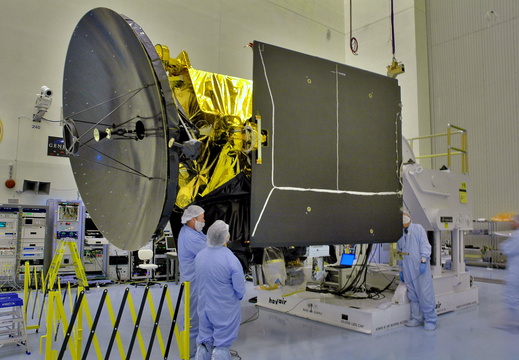
MARS RECONNAISSANCE ORBITER
A Mission to Study the History of Water on Mars
After a seven-month cruise to Mars and six months of aerobraking to reach its science orbit, Mars Reconnaissance Orbiter will seek to find out about the history of water on Mars with its science instruments. They will zoom in for extreme close-up photography of the martian surface, analyze minerals, look for subsurface water, trace how much dust and water are distributed in the atmosphere, and monitor daily global weather.
These studies will help determine if there are deposits of minerals that form in water over long periods of time, detect any shorelines of ancient seas and lakes, and analyze deposits placed in layers over time by flowing water. It will also be able to tell if the underground martian ice discovered by the Mars Odyssey orbiter is the top layer of a deep ice deposit or whether it is a shallow layer in equilibrium with the current atmosphere and its seasonal cycle of water vapor.
Looking at Small-Scale Features
In its survey of the red planet, Mars Reconnaissance will increase tenfold the number of spots surveyed close-up. One of the Mars Reconnaissance Orbiter's cameras is the largest ever flown on a planetary mission. While previous cameras on other Mars orbiters could identify objects no smaller than a school bus, this camera will be able to spot something as small as a dinner table. That capability will also allow the orbiter to identify obstacles like large rocks that could jeopardize the safety of future landers and rovers. Its imaging spectrometer will also be able to look at small-scale areas about five times smaller than a football field, at a scale perfect for identifying any hot springs or other small water features.
Powerful Communications and Navigation Link
The orbiter's telecommunications systems will also establish a crucial service for future spacecraft, becoming the first link in a communications bridge back to Earth, an "interplanetary Internet" that can be used by numerous international spacecraft in coming years. Testing the use of a radio frequency called Ka-band, Mars Reconnaissance Orbiter may demonstrate the potential for greater performance in communications using significantly less power.
The orbiter also carries an experimental navigation camera. If it performs well, similar cameras placed on orbiters of the future would be able to serve as high-precision interplanetary "eyes" to guide incoming landers to precise landings on Mars, opening up exciting - but otherwise dangerous - areas of the planet to exploration.
The orbiter's primary mission ends about five-and-a-half years after launch, on December 31, 2010.
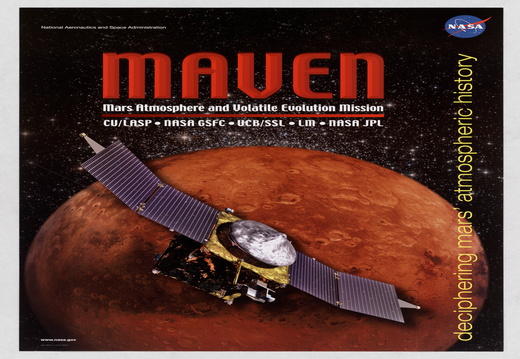
MAVEN
Scientists will use MAVEN data to determine the role that loss of volatiles from the Mars atmosphere to space has played through time, giving insight into the history of Mars' atmosphere and climate, liquid water, and planetary habitability.
The principal investigator is Shannon Curry, University of California, Berkeley.
MAVEN is the first Mars mission managed by the Goddard Space Flight Center.
Download the MAVEN Mission Fact Sheet (pdf).
MAVEN's instrument suite will consist of eight sensors:
Partners:
The University of Colorado will coordinate the science team and science operations and lead the education and public outreach activities.
NASA Goddard will also provide mission systems engineering, mission design, and safety and mission assurance.
Instruments on the spacecraft will be provided by the University of California, Berkeley, the University of Colorado, Boulder, and NASA Goddard, with the Centre d’Etude Spatiale des Rayonnements, Toulouse, France, providing the sensor for one instrument.
Lockheed Martin Corp., based in Bethesda, Md., will develop the spacecraft, conduct assembly, test and launch operations, and provide mission operations at their Littleton, Colorado facility.
NASA's Jet Propulsion Laboratory, Pasadena, Calif., will provide navigation support, the Deep Space Network, and Electra telecommunications relay package.
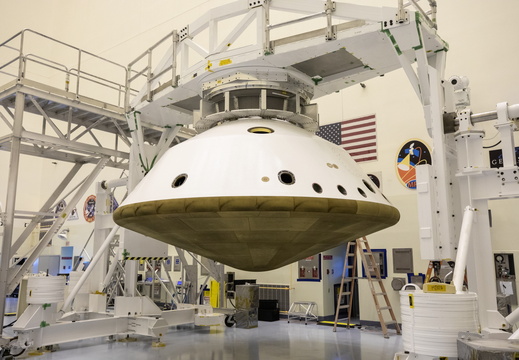
PERSEVERANCE
The mission also provides opportunities to gather knowledge and demonstrate technologies that address the challenges of future human expeditions to Mars. These include testing a method for producing oxygen from the Martian atmosphere, identifying other resources (such as subsurface water), improving landing techniques, and characterizing weather, dust, and other potential environmental conditions that could affect future astronauts living and working on Mars.
